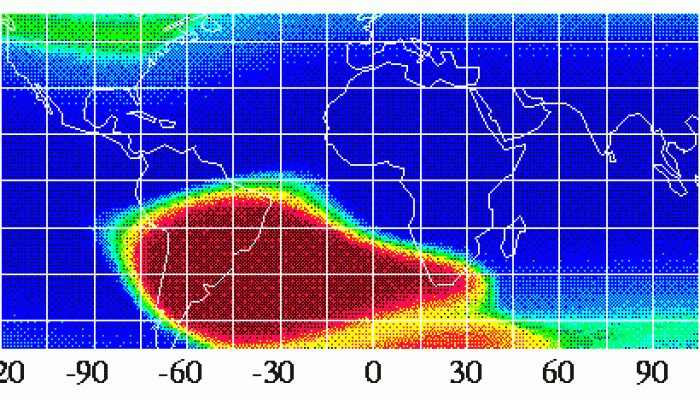Geotalk is a regular feature highlighting early career researchers and their work. In this interview we speak to Jay Shah, a PhD student at Imperial College London, who is investigating the South Atlantic Anomaly, a patch over the South Atlantic where the Earth’s magnetic field is weaker than elsewhere on the globe. He presented some of his recent findings at the 2017 General Assembly. First, coul ...[Read More]
GeoTalk: The anomaly in the Earth’s magnetic field which has geophysicists abuzz

The South Atlantic Anomaly (SAA, the large red area in the image) is a dip in the Earth's magnetic field which allows cosmic rays, and charged particles to reach lower into the atmosphere. This interferes with communication with satellites, aircraft, and the Space Shuttle. While there are theories as to why this occurs, the geologic origin is not yet known.
The data were collected by the South Atlantic Anomaly Detector (SAAD) aboard ROSAT. It consists of 10 cm² of Germanium and served as a particle background monitor. The SAAD was used to "safe" the PSPC if rates became too high.
Source: ROSAT SAA Guest Observer Facility (NASA Goddard Space Flight Centre) . Credit: S. L. Snowden
